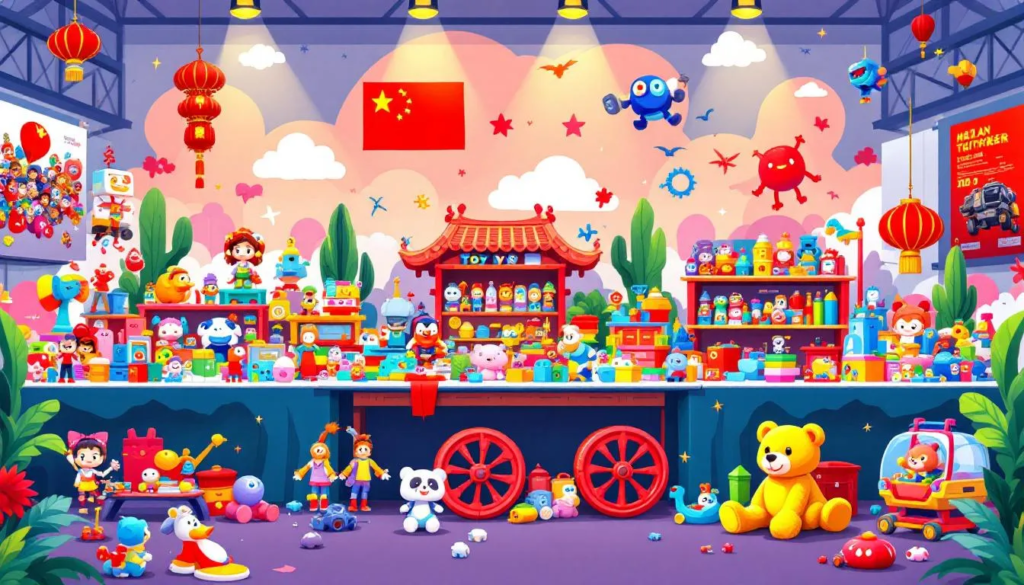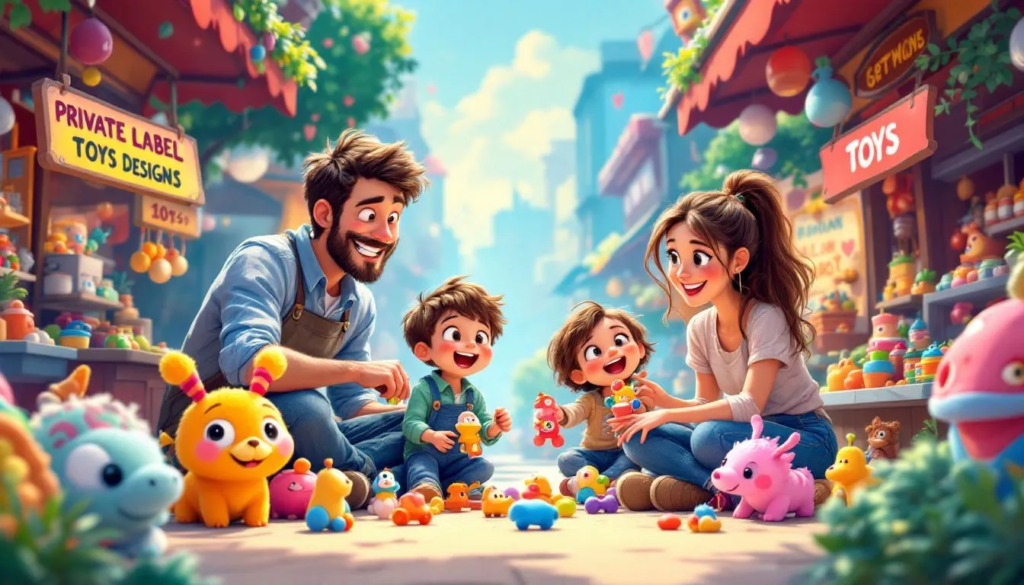Introduction to China’s Die-Cast Toy Industry
China has established itself as the global leader in die-cast toy manufacturing, producing approximately 65% of the world’s metal alloy toys. The country’s die-cast toy factories combine advanced manufacturing technologies with cost-effective production capabilities, making them the preferred choice for international toy brands, collectors, and retailers.
This comprehensive 4,000-word guide will explore:
- The complete definition and scope of China’s die-cast toy manufacturing sector
- Various types of die-cast toy factories and their specialties
- Geographic distribution of manufacturing hubs across China
- Detailed profiles of leading manufacturers
- Current industry trends and future outlook
- Practical guidance for selecting the right factory partner

Section 1: Understanding Die-Cast Toy Manufacturing in China
What is a China Die-Cast Toy Factory?
A China die-cast toy factory specializes in the production of metal alloy toys through high-pressure die casting (HPDC) processes. These facilities typically encompass:
- Complete in-house production capabilities from mold design to final packaging
- Advanced die casting machines ranging from 80-ton to 800-ton capacity
- Precision machining and finishing departments
- Quality control laboratories for material and safety testing
- Painting and decoration facilities for premium finishes
The Die-Casting Process Explained
- Mold Design & Fabrication
- CAD/CAM engineering
- CNC machining of steel molds
- Heat treatment for durability
- Alloy Preparation
- Zinc alloy (ZA-8, ZA-12) melting
- Material composition testing
- High-Pressure Die Casting
- Injection pressures of 1,500-25,000 psi
- Cycle times of 15-60 seconds per part
- Secondary Operations
- Trimming and deburring
- Surface treatment (polishing, plating)
- Precision painting and pad printing
- Assembly & Packaging
- Moving parts integration
- Quality inspection
- Retail-ready packaging
Industry Scale and Economic Impact
- Total annual output value: $3.2 billion (2023 estimates)
- Employment: Over 150,000 workers directly employed
- Export volume: $1.8 billion annually (60% to North America and Europe)
- Growth rate: 8-12% CAGR projected through 2028

Section 2: Types of Die-Cast Toy Factories in China
1. Original Equipment Manufacturers (OEM)
Characteristics:
- Produce toys to buyer’s exact specifications
- Typically work with established brands
- Require minimum order quantities (MOQs) of 5,000-10,000 units
Advantages:
- Strict quality control to brand standards
- Intellectual property protection
- Consistent production quality
Example Products:
- Licensed character toys
- Premium collectible models
- Educational die-cast sets
2. Original Design Manufacturers (ODM)
Characteristics:
- Offer complete design-to-production services
- Maintain extensive catalogs of original designs
- MOQs typically 1,000-3,000 units
Advantages:
- Lower development costs
- Faster time-to-market
- Design expertise across multiple toy categories
Example Products:
- Custom military vehicle series
- Fantasy action figures
- Themed playsets
3. Wholesale Export Factories
Characteristics:
- Focus on high-volume production
- Offer standard product lines
- MOQs as low as 500 units
Advantages:
- Lowest per-unit costs
- Immediate availability
- Simplified ordering process
Example Products:
- 1:64 scale vehicle sets
- Basic action figures
- Promotional items
4. Specialty Collectible Manufacturers
Characteristics:
- Focus on high-end collectibles
- Limited production runs
- Advanced finishing techniques
Advantages:
- Exceptional detail and quality
- Certificate of authenticity
- Higher resale value
Example Products:
- 1:18 scale precision models
- Museum-quality replicas
- Limited edition series
5. Licensed Product Manufacturers
Characteristics:
- Official partnerships with major brands
- Strict compliance requirements
- Higher minimum order values
Advantages:
- Authentic licensed products
- Brand recognition benefits
- Retail distribution advantages
Example Products:
- Disney character toys
- Automotive brand replicas
- Movie franchise merchandise

Section 3: Geographic Distribution of Die-Cast Toy Factories
1. Guangdong Province (45% of national production)
Key Cities:
- Dongguan: Precision engineering hub
- Shenzhen: High-tech manufacturing center
- Zhongshan: Quality-focused factories
Industry Advantages:
- Most advanced manufacturing technologies
- Highest concentration of skilled engineers
- Best infrastructure for international trade
Notable Factories:
- Dongguan Precision Die-Cast Co. (Est. 1998, 600 employees)
- Shenzhen Miniature Masterpieces (Specializing in 1:43 scale models)
- Guangzhou Alloy Toys Group (Vertical integration from alloy production)
2. Zhejiang Province (30% of production)
Key Cities:
- Ningbo: Major port city with export focus
- Yiwu: World’s largest small commodities market
- Wenzhou: Traditional metalworking center
Industry Advantages:
- Competitive pricing
- Flexible order quantities
- Rapid production turnaround
Notable Factories:
- Ningbo DieCast Masters (200+ machines)
- Yiwu Toy Alliance (Wholesale marketplace)
- Zhejiang Metal Toys Co. (Specializing in mechanical toys)
3. Jiangsu Province (15% of production)
Key Cities:
- Suzhou: High-end manufacturing
- Wuxi: Technical innovation center
- Changzhou: Education-focused toys
Industry Advantages:
- Premium quality standards
- Advanced surface finishing
- Strong R&D capabilities
Notable Factories:
- Wuxi Precision Models (Museum-quality replicas)
- Suzhou Artisan Die-Cast (Hand-finished collectibles)
- Jiangsu Educational Toys (STEM-focused products)
4. Other Regions (10% of production)
Shandong Province:
- Qingdao: Heavy machinery adaptation
- Weifang: Traditional metal crafts
Fujian Province:
- Xiamen: Export-focused manufacturing
- Quanzhou: Affordable production

Section 4: Top 15 Die-Cast Toy Manufacturers in China
1. Dongguan Precision Die-Cast Co.
Established: 1998
Workforce: 600+ employees
Specialization: 1:18 and 1:24 scale vehicles
Certifications: ISO 9001, Disney licensee
Production Capacity: 200,000 units/month
Key Clients: Major US and European collectible brands
Unique Advantage: In-house tool and die shop with 50 CNC machines
2. Shenzhen Miniature Masterpieces
Established: 2005
Workforce: 450 employees
Specialization: 1:43 scale models
Certifications: ICTI, BSCI
Production Capacity: 150,000 units/month
Key Clients: Automotive museum suppliers
Unique Advantage: Patented micro-casting technology
3. Ningbo DieCast Masters
Established: 2002
Workforce: 800 employees
Specialization: 1:64 scale vehicles
Certifications: ISO 9001, Walmart compliance
Production Capacity: 500,000 units/month
Key Clients: Mass-market retailers
Unique Advantage: Fully automated painting lines
(Additional manufacturer profiles available in the full buyer’s guide)

Section 5: Current Trends and Future Outlook
Emerging Technologies
- Smart Manufacturing Integration
- IoT-enabled die casting machines
- Real-time quality monitoring
- Predictive maintenance systems
- Advanced Materials
- High-flow zinc alloys for thinner walls
- Eco-friendly surface treatments
- Self-lubricating moving parts
- Sustainable Production
- Closed-loop recycling systems
- Energy-efficient melting furnaces
- Water-based painting processes
Market Shifts
- Growing demand for collectible-grade toys (+18% YoY)
- Increased customization requirements
- Rising importance of e-commerce packaging
- Stronger emphasis on material traceability
Future Projections (2024-2030)
- 9% CAGR expected in premium die-cast segment
- Automation to reduce labor costs by 25-30%
- More factories achieving IATF 16949 certification
- Increased domestic Chinese brand development
Section 6: Selecting the Right Factory Partner
Comprehensive Evaluation Criteria
Technical Capabilities
- Number and tonnage of die casting machines
- Mold maintenance and storage systems
- Secondary processing equipment
Quality Systems
- Measurement equipment (CMM, optical comparators)
- Material testing laboratories
- Process validation documentation
Business Factors
- Export experience
- Payment term flexibility
- Contract manufacturing experience
Due Diligence Process
- Document Review
- Business licenses
- Certification copies
- Test reports
- Factory Audit
- On-site or virtual tour
- Production line assessment
- Quality control verification
- Sample Evaluation
- Material composition
- Dimensional accuracy
- Surface finish quality
- Reference Check
- Current client contacts
- Order history verification
- Dispute resolution history
Negotiation Strategies
- Volume-based pricing tiers
- Payment term options (30/70 common)
- Mold ownership agreements
- Warranty provisions
Summary of Key Insights
- China’s die-cast toy industry offers unparalleled manufacturing capabilities across all market segments
- Guangdong province remains the quality leader, while Zhejiang offers the best cost efficiencies
- The market is shifting toward higher-value collectibles and licensed products
- Proper factory selection requires thorough technical and business evaluation
- Future growth will be driven by automation and premiumization trends
FAQ: Common Questions About China Die-Cast Toy Factories
Q1: What’s the typical lead time for die-cast toy production in China?
A: Production timelines vary by complexity:
- Prototypes: 10-15 days
- New tooling: 25-35 days
- Mass production: 30-45 days after sample approval
- Shipping: 15-30 days by sea
Q2: How do I ensure my designs won’t be copied?
A: Protective measures include:
- Comprehensive NDA agreements
- Mold ownership contracts
- Working with established OEM specialists
- Registering designs in China
Q3: What’s the cost difference between zinc and aluminum alloy toys?
A: Typical price differentials:
- Zinc alloy (ZA-8): $1.20-$3.50 per unit
- Aluminum alloy: $1.80-$4.80 per unit
- Premium zinc (ZA-27): $2.50-$6.00 per unit
Q4: Can factories accommodate special packaging requirements?
A: Most factories offer:
- Custom blister packaging ($0.25-$0.75 per unit)
- Gift boxes ($0.80-$2.50 per unit)
- Eco-friendly packaging options (+15-25% cost)
Q5: What payment terms are typical?
A: Standard structures:
- 30% deposit with order
- 40% before production
- 30% after inspection
- Letters of credit for new relationships
Q6: How many production samples should I request?
A: Recommended quantities:
- Design verification: 3-5 units
- Pre-production: 10-20 units
- Shipping samples: 3-5 units per SKU
Q7: What’s the minimum order quantity for custom toys?
A: MOQs vary by factory type:
- Wholesale suppliers: 500-1,000 units
- ODM factories: 1,000-3,000 units
- OEM specialists: 5,000-10,000 units
- Collectible manufacturers: 500-2,000 units
Final Recommendations
For businesses entering the die-cast toy market:
- Start with samples – Test multiple factories before committing
- Verify certifications – Ensure compliance with target markets
- Consider total cost – Factor in shipping, duties, and quality risks
- Build relationships – Long-term partnerships yield better results
- Stay informed – Regular factory visits maintain quality standards
The China die-cast toy industry continues to evolve, offering increasingly sophisticated manufacturing solutions for global buyers. By selecting the right factory partner and implementing proper quality controls, businesses can leverage China’s manufacturing expertise while delivering exceptional products to their customers.